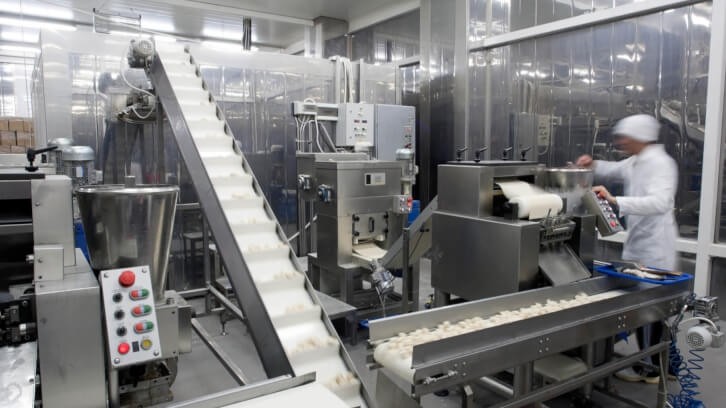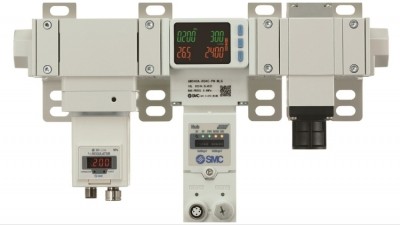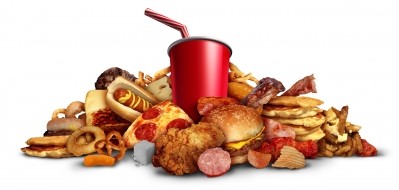Feature
New PFAS regulations set to rattle food industry

Over the last few years, the spotlight on PFAS and its impact on human health has seen headlines linking ‘forever chemicals’ with cardiovascular disease and cancer.
Short for per-fluroroalkyl-substances, PFAS are a large class of thousands of synthetic chemicals that contain one of the strongest bonds in organic chemistry – the carbon-fluorine bond.
This makes them incredibly durable and it’s one of the reasons why they are so widely used in society, including within food production. As the European Environment Agency states, they are stable under intense heat and many are also ‘surfactants’ and are used, for example, as water and grease repellents.
Probably one of the most talked about areas when it comes to PFAS and food is packaging. But PFAS can also be found in our industrial machinery too; from manifolds to valves and pipes, and even within the lubricants we use to maintain equipment.
Broadly, PFAS is everywhere and over time it can leak into the soil, air and water, eventually making its way into our bodies. More than 10,000 PFAS have been identified by researchers so far, although there may be more.
Due to the sheer number of PFAS chemicals and several other variables such as, their varied presence and our unknown exposure time, it makes measuring their influence difficult.
As their nickname ‘forever chemicals’ suggests, they are also extremely persistent, capable of remaining in the environment for generations. This means that the intensity at which we’re exposed to them is ever-increasing.
“Their use can result in an environmental burden that cannot easily be reversed,” Sue Bullock, head of chemical compliance, stewardship and sustainability at TSG Consulting, told Food Manufacture. “This, coupled with concerns and uncertainties regarding their tendency to bioaccumulate and potential to impact human health, has placed them in the spotlight.”
“These substances were broadly introduced in the 1940s so it’s unknown the full effect of all PFAS molecules longer term, although European commission has stated even just 0.5mg of PFAS in drinking water can be harmful,” Gareth Procter, senior product manager for lubricants manufacturer ROCOL, added.
Vikash Kumar, programme leader at research and consulting firm ChemBizR, agreed, likening PFAS to cigarettes – from day one it’s hard to identify any issues but after a while, their toll will become apparent.
PFAS regulations
Concerned by the potential impact, manufacturers have started to replace certain PFAS with other kinds of PFAS or with fluorine-free substances. It is for this reason that we’ve seen five EU member states calling for an overall ban on all PFAS last year, deeming it an ‘uncontrollable risk’.
Since Brexit, the UK had its own regulations around PFAS, with a ban on PFOA and its salts (with a few exemptions) and certain perfluorinated silane substances. However, for food and food contact materials, there are currently no specific restrictions in the UK.1
Still, if the EU decides to press ahead with the Universal Restriction Proposal, it will undoubtedly have a wide-reaching impact.
Food grade lubricants and PFAS
Within the EU proposal, food grade lubricants are mentioned specifically. Getting prepared for a transition, lube manufacturer ROCOL made the decision to move its UK manufactured FOODLUBE products to a PFAS-free formulation. This will join its range of products which currently hold ISO21469 certification, as well as halal, kosher, vegan and NSF H1 approvals and accreditations.
While most of its FOODLUBE products have always been PFAS-free, this change has affected six formulations which have been updated without compromising their performance.
“For some applications PFAS chemicals are vital and irreplaceable due to the chemical inertness of the final product and their resistance to specific environments. However, that said, there are definitely some applications where PFAS can be eliminated with no negative effects. For example, our FOODLUBE range – we did very extensive testing and customer trials, and saw no negative impact in the final product or application by removing the PFAS components,” Procter said.
The change from ROCOL, initiated in April 2024, will mean the lubricants producer will reduce its amount of forever chemicals reaching the environment by an estimated 425kg per year. To highlight the new offering, the company’s FOODLUBE statement has been amended, with the additional claim that they do not contain added PFAS.
‘It won’t be straightforward’
Whilst some have managed to find ways around PFAS-containing materials, it won’t be easy for everyone. There aren’t many alternatives that can perform as well as PFAS can, and as Kumar referenced, it’s likely to cost a pretty penny.
“Ultimately, it will increase the system cost. The question is who will bear that cost now and in the future,” Kumar stated.
Bullock concurred, saying a changeover won’t be “straightforward”.
“Many PFAS substances have unique properties and, in some cases, they cannot be easily substituted,” she said. “When these uses are important for safety or society, a universal ban would have significant implications. The definition included in the EU’s proposed broad restriction would apply to many thousands of substances. To further complicate things, differences in regulatory approaches are likely to mean substances and products will be affected in different ways between markets.”
In addition, risk assessments around alternatives will need to be investigated further to avoid, as a Health & Safety Executive (HSE) report put it, “regrettable substitution”.
Despite its success in reformulation, the difficulties in replacing PFAS did hit ROCOL, as Procter explained: “There are some applications that are particularly challenging and still require PFAS-containing products as alternative technologies are still in development.
Whilst ROCOL has begun its PFAS-free journey, the company has emphasised that “individual efforts are not enough”.
In a statement issued to the press, the organisation said it is “imperative for the industry to recognise its collective responsibility in mitigating PFAS contamination and safeguarding the environment” and “this requires a concerted effort to prioritise transparency, innovation and collaboration”.
Adding to this, Bullock said it will be important for PFAS regulation to be considered from a “global perspective” as different markets are approaching it in different ways.
“Companies with an international footprint may have to navigate various requirements in the coming years, so a holistic strategy will be needed,” she noted.
The future of UK PFAS regulation
Although specific PFAS regulation in the UK may be limited to date, the HSE has said further restrictions should be considered. Being a ubiquitous chemical, this may or may not impact food manufacturers.
Meanwhile, Defra has created a PFAS subgroup in the Chemicals Stakeholder Forum to help inform policy development. This group has also said it has started to identify priorities for UK regulation around PFAS, which will include proposals for restrictions.
Speaking with Leatherhead Food Research’s principal consultant Mark Moss on the regulatory landscape, he said: “It remains to be seen what the specific regulations for PFAS in food and beverage will look like in the UK and the EU. At present, thousands of comments submitted during the public consultation on the proposed universal PFAS restriction are being evaluated. While the schedule beyond September 2024 is not transparent, if ECHA finalises its opinion and the European Commission adopted the proposed restriction as envisaged and with little delay, the restrictions could start to come into effect in 2027, possibly even late 2026. Meanwhile the UK’s Health and Safety Executive is considering a more targeted approach.”
Considering the future of the UK regulatory landscape, Bullock said: “This could include, for example, an authorisation process that would allow continued use of PFAS as processing aids in circumstances where release can be minimised until alternatives are available.”
So…what now?
Bullock continued: “New challenges for food manufacturers will include figuring out where PFAS are present in raw materials, processing aids, equipment and products. This can be highly complex because there are hundreds if not thousands of PFAS substances in regular use, and reliable information from suppliers and authorities is often limited. While the presence of PFAS may be obvious in some applications (such as non-stick equipment), other uses, for instance in packaging, speciality lubricants or sensing equipment components, are often less clear.
“Identifying where PFAS are present intentionally and where PFAS are present through, for example, contamination, is itself a major challenge – testing might be needed, and this requires expertise. Sourcing PFAS-free alternatives will involve time, costs and, often, trade-offs. Removing PFAS contamination could also be a significant cost for industry.”
So what should manufacturers do now? Bullock suggests a “thorough and detailed look at products, manufacturing processes and supply chains”.
“Ask your suppliers for robust information about PFAS in the products you buy,” she recommended. “Develop a careful, well-informed approach to testing to check for PFAS in products. Based on this, you will be able to plan for compliance with regulations and communicate more intelligently with customers and other stakeholders. This will help ensure efforts to remove PFAS are focused and effective. It will also enable thoughtful and constructive engagement with policy making.
“There will be a high level of regulatory activity in this space over the coming months and years, so it’s important to know your stance and keep appraised of the situation.”
Moss echoed her sentiments: “While there are no specific UK regulations for PFAS levels in food products at present, general requirements for food safety apply. It may be advisable to factor PFAS into contaminant safety analysis routines sooner rather than later.”
Seven industrial machines to keep your eyes on
1. Endoline promises energy savings of over 60% with air management plug-in
Endoline Automation has re-engineered its 248 Fully Automatic Case Erector, incorporating an SMC Pneumatics UK Air Management System to monitor the case erector’s air consumption.
Widely used to drive automation on large-scale factory processes, compressed air typically accounts for up to 40 % of a manufacturing facility’s total energy bill and leak rates can be high if not monitored effectively.
The Air Management System AMS30 will monitors the air flow of the case erector, only using the amount needed. When the machine isn’t in operation, it can reduce the air pressure to set values and isolate the air supply which the business says will ‘vastly reduce’ costly and often needless air consumption.
The system features an OPCUA open dashboard facility to monitor the output of compressed air from the system. This information is capable of being fed through to the customer’s chosen monitoring system providing them with a precise picture of the amount of air being used.
The integration of SMC’s Air Management System AMS can now be fitted to most Endoline Automation systems, and retrofitted to existing Endoline systems if modifications are made.
2. Next-level potato slicing from FAM STUMABO
A new potato slicer has been launched by industrial cutting manufacturer FAM STUMABO.
The machine dubbed ‘Scalibur’ features a dual rotation technology, where both the cutting head and the impeller rotate for a controlled and gentle cutting process.
Whereas potatoes were previously pushed against a static knife, the Scalibur’s rotating blade slices through the potato at a lower speed. This, combined with the independent centrifugal force of the impeller, minimises impact damage to the potato’s cell structure. The speed differential between these components is programmed and adjustable via the touchscreen interface.
The slicer comprises dual stainless steel motors (3.7 kW) and variable frequency drives for fine-tuned differential speed adjustments.
The slicer can be used for various applications, from potatoes chips to vegetables chips. It is also supplied with a full range of interchangeable cutting heads: flat, crinkle or V-cut slices or sticks in a variety of dimensions.
3. Potato shelf-life extension with sprout suppressor
Potato sprout control technology provider Biofresh Safestore is highlighting its suppressant system, which extends potato shelf-life.
The Biofresh Safestore system uses ethylene to lengthen the crop's life without leaving a chemical residue on the produce or in the store environment.
It uses 99.95% ethylene supplied in cylinders, which satisfies CRD quality requirements and HSE safety requirements. Using cylinders ensures the delivery of pure ethylene, avoiding potential impurities that may occur when generating ethylene from ethanol.
The Biofresh Safestore Ethylene Management Unit has been specifically developed to deliver carefully controlled low-level concentrations of pure ethylene throughout any size of store. This is said to be a simpler, cheaper and cleaner approach than alternative methods of sprout suppression.
The use of ethylene to delay sprouting can be traced back to the early 20th Century when farmers discovered that storing apples alongside their potatoes inhibited sprouting. This was a direct result of the ethylene produced by the apples affecting the potatoes. However, it wasn't until the early 1990s that any substantive work was conducted to establish whether ethylene would be suitable as a commercial sprout suppressant. The early work was carried out in Canada at the Atlantic Food & Horticultural Research Centre. The team at Biofresh Safestore worked closely with the Canadian researchers to develop the Safestore system.
The system requires a hard-standing safety cage for the cylinders and a standard 13-amp electrical supply. According to the company, it has low running costs and no tonnage fees (which are charged by some other companies that provide sprout suppressant systems).
4. Laser ideal for marking carboard pots
Macsa id UK a manufacturer of coding and marking systems for the food sector has released the SPA2 CO2 laser coding system, designed to make printed cardboard pots – a format of packaging that has become popular in dairy.
Cardboard is used by dairy processors and manufacturers due to its effective thermal insulation, light protection and recyclability. Alongside this, it’s also sustainable and versatile nature, meaning it can be fashioned into different shapes.
According to Macsa, laser marking on cardboard offers significant advantages, such as precise coding on high speed production lines, accurate reproduction of details, durability of the marking and the ability to handle various types of board, including coated or specially finished ones.
Additionally, laser coding technology is fume free, does not require consumables and generates zero waste, making it environmentally friendly, eco-conscious and more efficient. Plus, the non-contact marking process prevents wear and deterioration of the pack.
The machine uses a light beam to strike packs in a controlled manner, removing the surface layer of paint. The intensity and clarity of the marking depends on the colour of the cardboard pots – for example, dark backgrounds such as blue, black, green and brown offer higher contrast than light colours like yellow and orange. However, dark colour reserves can also be applied to highlight markings in these lighter coloured backgrounds.
Macsa id’s flexible SPA2 range of 10W, 30W and 40W CO2 laser coders are suitable for high speed packaging applications. The advanced machines are typically used to code paper and board, glass and ceramics, coated materials, PET and PVC.
It can be integrated with any production line or application, and are designed to be easy to install, program and operate. A wizard supports installation and online help videos, technical guides and tips can be accessed via a new 10-inch handheld touchscreen controller designed to make programming quicker and to eliminate operator errors. The SPA2 models can also be controlled direct from a PC via an ethernet link or PLC with Profinet or OPC-UA.
5. Automated pallet label helps reduce mistakes
Videojet has released the 9560 PL pallet labelling system. In addition to its ability to cover up to three sides of a pallet and apply up to four labels, the 9560 PL can process up to 120 pallets per hour across a range of applications. The 9560 PL also facilitates secure warehouse management and adherence to industry regulations.
The 9560 PL verifies label accuracy and reprints incorrect labels where needed to help ensure error-free operations and improve productivity. An integrated barcode scanner can be used to verify the readability of bar codes on printed labels. If a bar code is unreadable because of a dead dot occurrence, the 9560 PL automatically reprints the label in a landscape orientation and the rotating tamp pad applies the label over the unreadable one. The system then rescans to ensure the code is readable.
The 9560 PL meets GS1 specifications by applying identical 6 x 4-inch (A6) or 6 x 8-inch (A5) labels on up to three sides. Labels exposed to harsh production environments can warp, deform and impact adhesion to the pallet, resulting in unnecessary waste of label rolls. The 9560 PL’s fully enclosed cabinet protects labels installed in the system from challenging conditions.
The tamp arm reaches up to 700mm and offers a 90-degree pivot, with an overhang option increasing the arm’s reach by 150mm.
The 9560 PL can be installed in a range of locations close to the end of a production line. The system is designed to be compact, but is available in three height options, with the choice of right or left-hand cabinet doors.
6. Precision sensor for demanding measurements
SICK has developed the 1D laser distance sensor, capable of measuring differences in height accurately – even on challenging materials.
The SICK OD7000’s chromatic confocal technology enables precise measurement on a range of materials, from black to transparent, diffuse, reflective, and even curved surfaces. For example, it can identify whether a target object is smooth or is positioned correctly. It can also measure holes or check if a material has the desired thickness.
Using one sensor head, it can measure up to three very thin layers simultaneously, even if the material is transparent.
Both the separate controller and sensor head are compact, with the OD7000 purpose-built to fit into the tightest machine spaces.
There are two controller types, both with EtherNet interface, and a choice of three sensor heads span measurement ranges of 600μm, 4mm and 10mm with corresponding resolutions of 25nm, 180n, and 400nm.
7. Salva ovens now available in UK
A partnership between Interfood and oven manufacturer Salva is seeing the company’s oven range heading to the UK.
Salva has been manufacturing ovens since 1943 and was the first to launch a modular oven into the Spanish market. It is now one of Europe’s 10 largest manufacturers and is in its third generation of operation by the Llordés family.
This roll-out will cover the whole range of deck, rotary and fixed rack convection ovens, along with ancillary equipment including retarder provers, mixers and blenders.
The range offers options to cover the requirements of retail craft bakeries through to semi-industrial operations, with electric ovens said to bring an estimated saving of £700 per year, per deck.
The modular ovens are custom built, with the potential to configure individual decks for different applications.
The deck ovens feature ceramic heaters which hold the temperature, offering a consistent bake. While the convection ovens use a heated and static air circulation system that achieves uniform baking by avoiding hot and cold spots.
The controls feature a smart touch control panel developed by Salva to be user-friendly and intuitive, offering useful information such as energy consumption data, warnings and alarm screens.
Reference


















